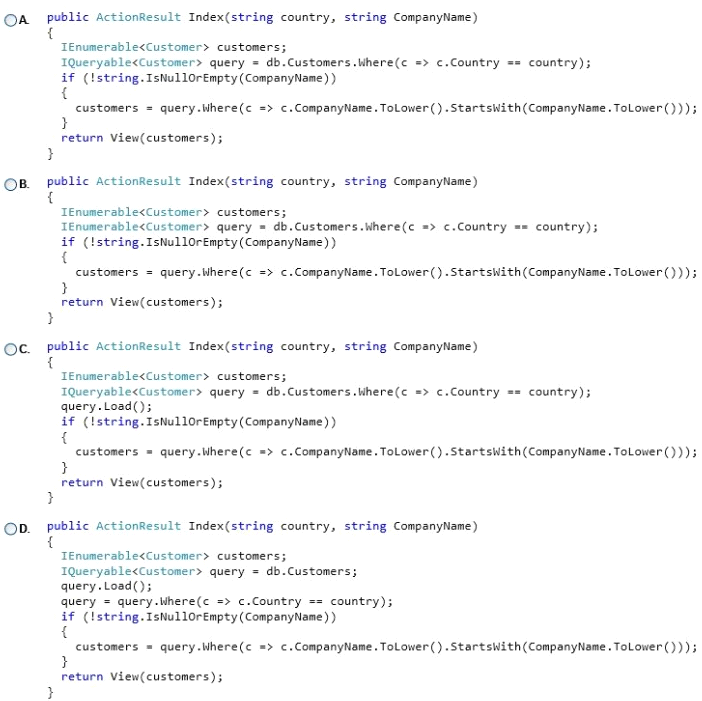Microsoft Developing Microsoft Azure and Web Services 70-487 Exam Practice Test
You are developing a Windows Communication Foundation (WCF) service for a company. The service will be used for bidirectional communications between the company's physical offices.
You plan to implement Azure Service Bus.
You need to configure the WCF service.
Which type of binding should you use?
Answer : B
References:
https://docs.microsoft.com/en-us/azure/service-bus-relay/service-bus-relay-tutorial
Note: This question is part of a series of questions that present the same scenario. Each question in the series contains a unique solution that might meet the stated goals. Some question sets might have more than one correct solution, while others might not have a correct solution.
After you answer a question in this section, you will NOT be able to return to it. As a result, these questions will not appear in the review screen.
You deploy an ASP.NET Core web application to Azure App Services. You are using Azure Event Hubs to collect the telemetry data for the application.
You need to configure Event Hubs to automatically deliver the telemetry data stream to a persistent data store.
Solution: Configure Azure Event Hubs Capture to deliver data to Azure File Service.
Does the solution meet the goal?
Answer : B
Use Azure Blob storage to store the telemetry data.
References: https://docs.microsoft.com/en-us/azure/event-hubs/event-hubs-capture-overview
You are developing an ASP.NET Core web application by using an Entity Framework code-first approach. The application uses a SQLite database.
You make changes to the classes in the model. You must apply the changes to the database.
You need to suggest an approach to reliably handle the Entity Framework migrations.
Which three actions should you perform? Each correct answer presents a part of the solution.
NOTE: Each correct selection is worth one point.
Answer : C, D, E
E: Run dotnet ef migrations add InitialCreate to scaffold a migration and create the initial set of tables for the model.
C: You can workaround some of the SQLite limitations by manually writing code in your migrations to perform a table rebuild. A table rebuild involves renaming the existing table, creating a new table, copying data to the new table, and dropping the old table.
D: SQLite does not support all migrations (schema changes) due to limitations in SQLite. For new development, consider dropping the database and creating a new one rather than using migrations when your model changes.
References:
https://docs.microsoft.com/en-us/ef/core/get-started/netcore/new-db-sqlite
https://docs.microsoft.com/en-us/ef/core/providers/sqlite/limitations
The PurchaseOrders.xml file contains all of the purchase orders for the day.
You need to query the XML file for all of the billing addresses.
Which code segment should you use?

Answer : D
The DeleteExternalOrder() method in the ExternalQueueService service is not throwing a FaultException exception as defined by the FaultContractAttribute attribute in the IExternalQueueService.cs file.
You need to throw the FaultException exception.
Which code segments can you insert at line EQ45 to achieve this goal? (Each correct answer presents a complete solution. Chose all that apply)

Answer : B, C
The PurchaseOrders.xml file contains all of the purchase orders for the day.
You need to query the XML file for all of the shipping addresses.
Which code segment should you use?

Answer : B
You are developing an ASP.NET MVC application. The application is an order processing system that uses the ADO.NET Entity Framework against a SQL Server database. It has a controller that loads a page that displays customers. Customers are filtered on Country and, if provided, on CompanyName.
You have an Entity Framework context named db.
The Customer class is shown below.

You need to execute a single deferred query to return the filtered list of customers.
Which code segment should you use?

Answer : C